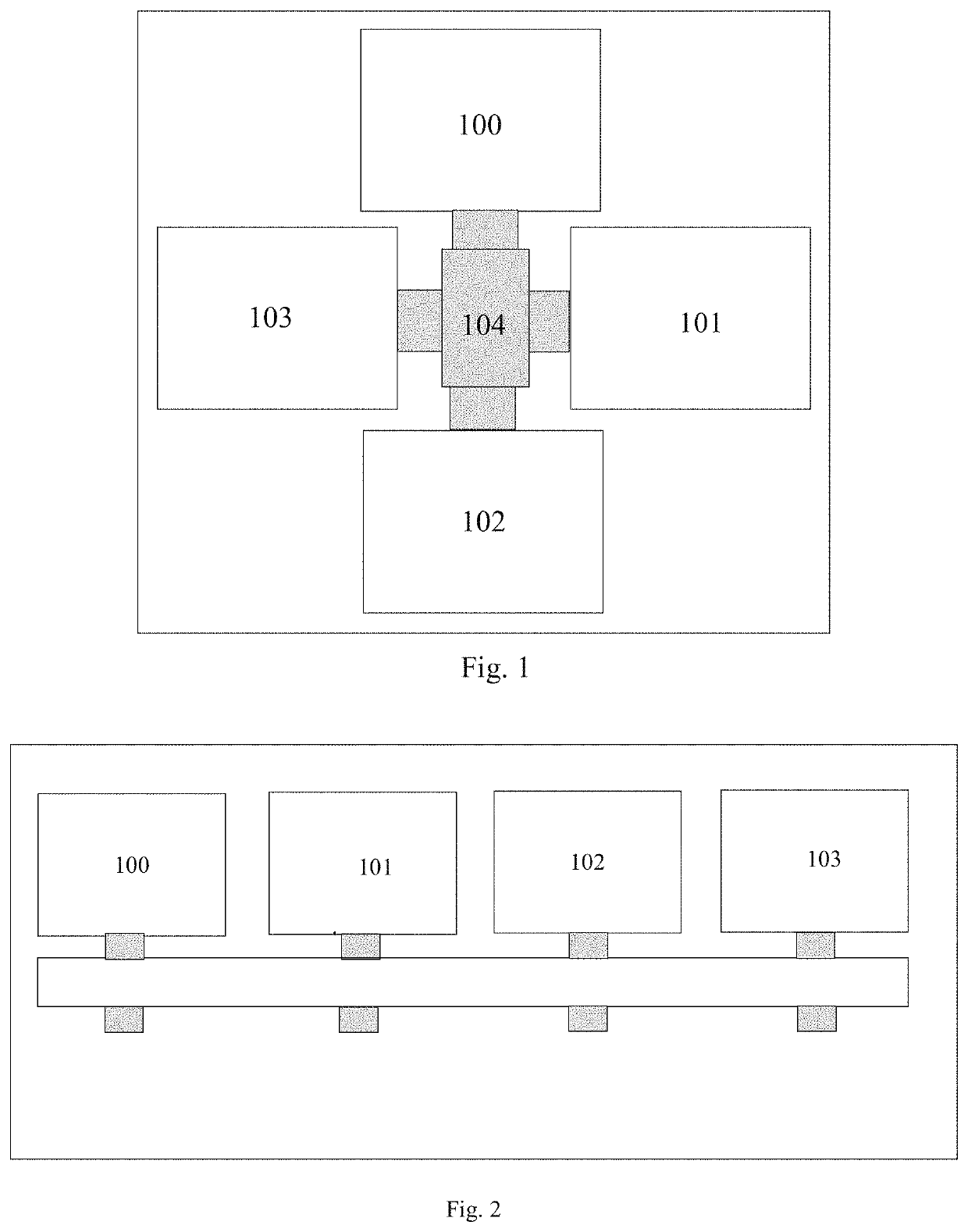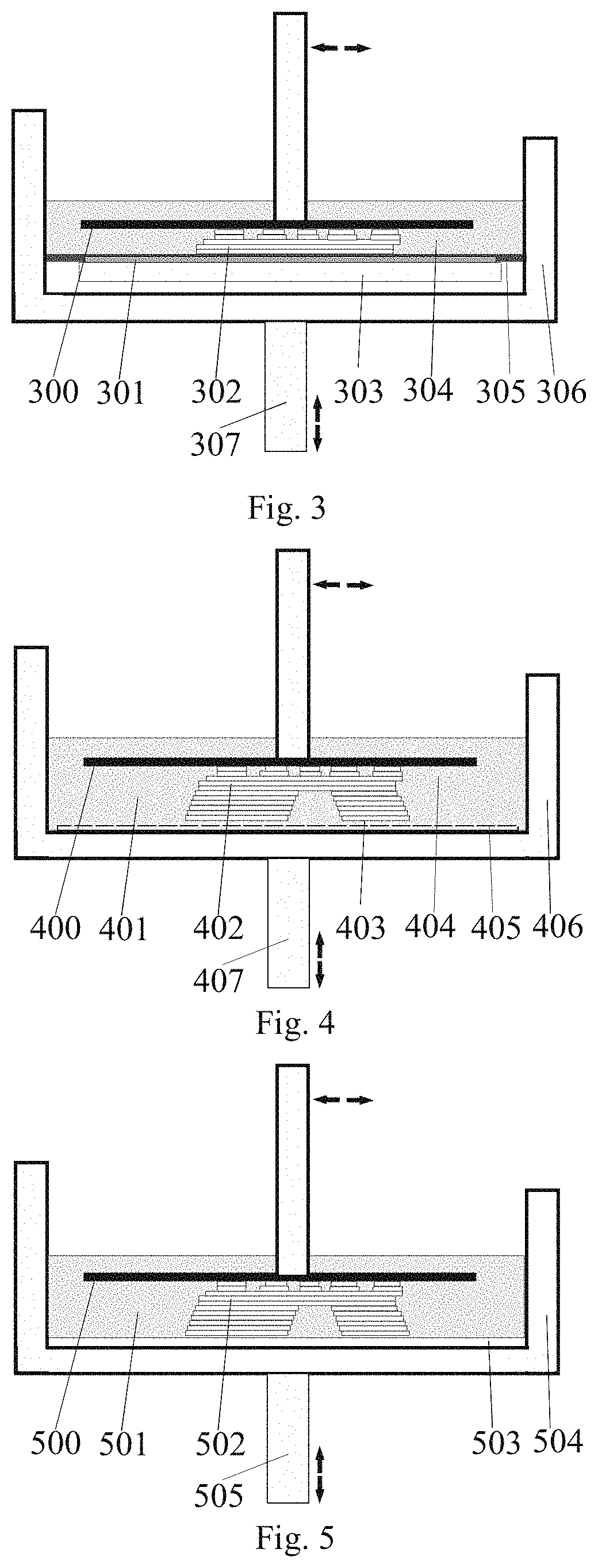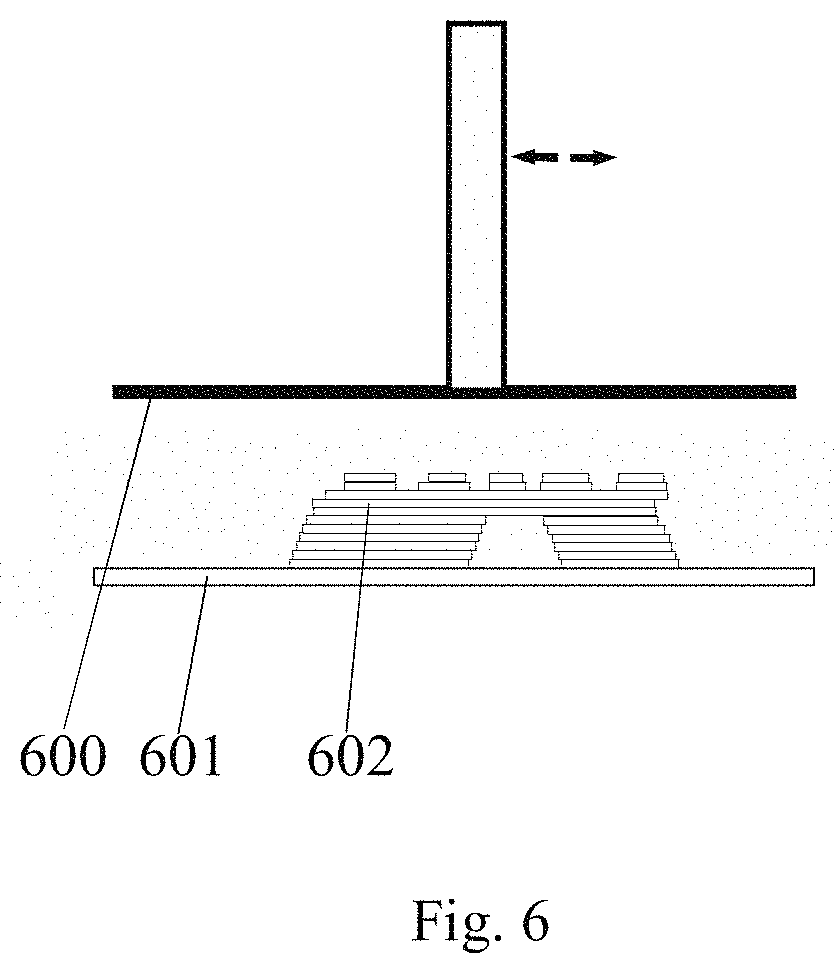Method of Automating the Manufacture of 3D Printed Objects
- Summary
- Abstract
- Description
- Claims
- Application Information
AI Technical Summary
Benefits of technology
Problems solved by technology
Method used
Image
Examples
Embodiment Construction
[0071]This method describes the automation of the separate processes in an SLA printer where the form of exposure is light emitted from a visual display screen. The process in this invention combines the exposure, wash, post exposure and optional load and unload processes in a sequence so that each of these processes can be performed simultaneously. In this example, each of these processes have a distinct station such that each process is a distinct and separate step in the method. It is a requirement of SLA printers that they must have accurate motion in the z-axis or build direction. As described herein the term “z-axis” is intended to refer to the axis defined by the build direction. This method describes a method of automation that separates the tasks of motion in the xy-plane and motion in the z-axis, here the stations move vertically in the z-axis only and the print platforms move in a rotational or linear motion in the horizontal plane. It is a novelty therefore of this appro...
PUM
| Property | Measurement | Unit |
|---|---|---|
| Exposure limit | aaaaa | aaaaa |
Abstract
Description
Claims
Application Information
 Login to view more
Login to view more - R&D Engineer
- R&D Manager
- IP Professional
- Industry Leading Data Capabilities
- Powerful AI technology
- Patent DNA Extraction
Browse by: Latest US Patents, China's latest patents, Technical Efficacy Thesaurus, Application Domain, Technology Topic.
© 2024 PatSnap. All rights reserved.Legal|Privacy policy|Modern Slavery Act Transparency Statement|Sitemap



